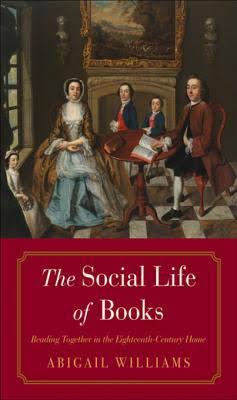In the third chapter of Abigail Williams’s wonderful book, we encounter an extract from soldier and journalist Alexander Somerville: ‘My father and mother had a window (the house had none) consisting of one small pane of glass, and when they moved from one house to another…they carried the window with them and had it fixed in each hovel into which they went as tenants.’ That portable window was the only means by which the Somerville family could afford the luxury of reading indoors. In the preceding chapter, we are introduced to ‘hearth tax’ records from the mid-seventeenth century providing statistics about firesides in registered houses. As evening fell, the fireside was the only place in the house where reading could be carried out, unless one was wealthy enough to afford unlimited wax candles. These are just two examples of how the act of reading, so taken for granted, is qualified by a host of material factors which either make reading possible or not at all. If one were to only consider legibility, one would have to consider such diverse factors as the point size of print, quality of paper, ability to pay window tax (there was such a thing in England between 1696 and 1851), the difference in quality between the light given by tallow candles, rush lights and wax, advances in ophthalmology, fire insurance (insurers discouraged reading in bed in case you set fire to the bed linen) and so on. All of these, and much more, are the subject of Abigail Williams’s magisterial study on reading at home in the eighteenth century.
Book historians (a new breed of scholars who have crafted the discipline of book history since the 1980s) have long considered histories of reading as the most challenging to write about. While many publishers have left their archives to posterity and the printers’ work may be studied in their output, the reader—the end-user of the entire process—is a much more slippery figure. Readers rarely leave behind records and memorials of their reading unless in passing, and scholars have to mine very deep indeed amongst memoirs, conduct-books, biographies and autobiographies on the one hand, and library records, periodicals, trade catalogues and the like on the other. There is really no short-cut to doing this kind of history, other than making use of the widest range of primary sources.

